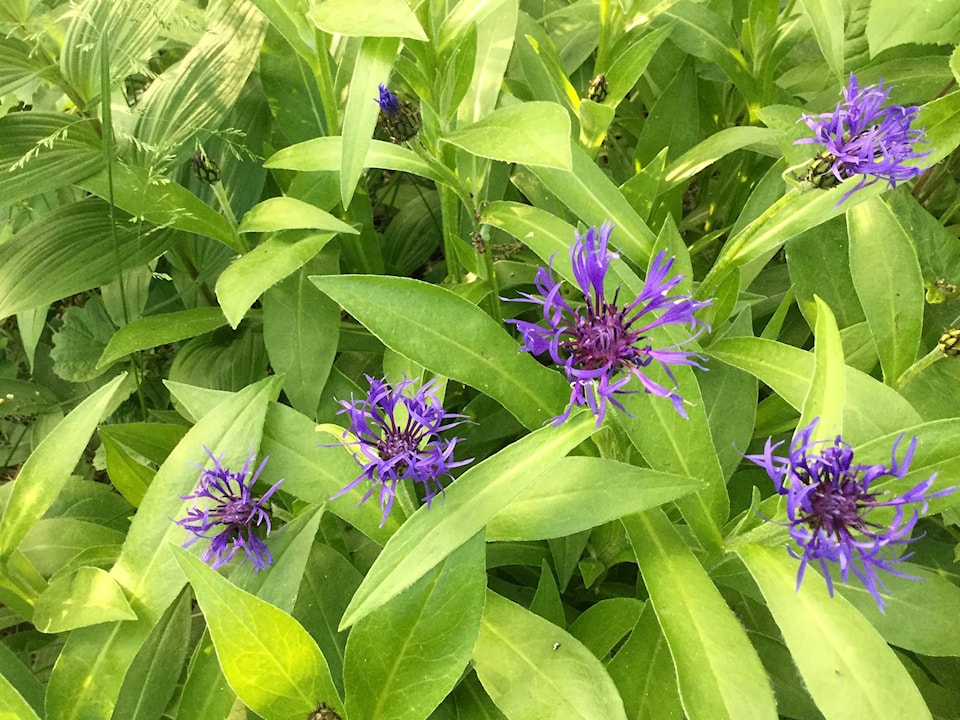A work crew was at the duck pond last week, dealing with an infestation of the Mountain Bluet invasive plant.
“This plant takes over gardens and many people dig it up and dump it not realizing that it produces thousands of weeds,” says Penni Graham, the project manager of the Northwest Invasive Plant Council, the regional organization which seeks to rid invasive species.
“It’s very dense leaf structure shades out our native species,” Graham added.
“It is a real problem across the northwest and in the Hwy16 corridor from Prince George and Hazelton and beyond.”
The Mountain Bluet looks almost the same as Bachelors buttons but they have a much different leaf and less of them, Graham said.
The plant council was tipped off about the infestation from Cindy Verbeek of the Houston branch of A Rocha Canada.
Workers from Spectrum Resource in Prince George, the firm contracted by the plant council to deal with invasive species, was on site.
Eric Nijboer from Spectrum Resource said workers would have used several methods to deal with Mountain Bluet — digging out the plant and herbicides, the latter applied away from water courses.
“Mountain Bluet is in the knapweed family, very similar. It can really take over and choke out native vegetation, resulting in a mono-culture,” he said.
Workers will also fertilize native vegetation to improve their ability to compete with an invasive species, Nijboer added.
“It’s definitely an ongoing battle for sure,” he continued in adding that Mountain Bluet years ago had been commonly sold in garden centres.
The plant council receives support from provincial ministries, regional and municipal governments, crown corporations, the private sector and other organizations.
Invasive plant management services provided include inventory, treatment and monitoring.
